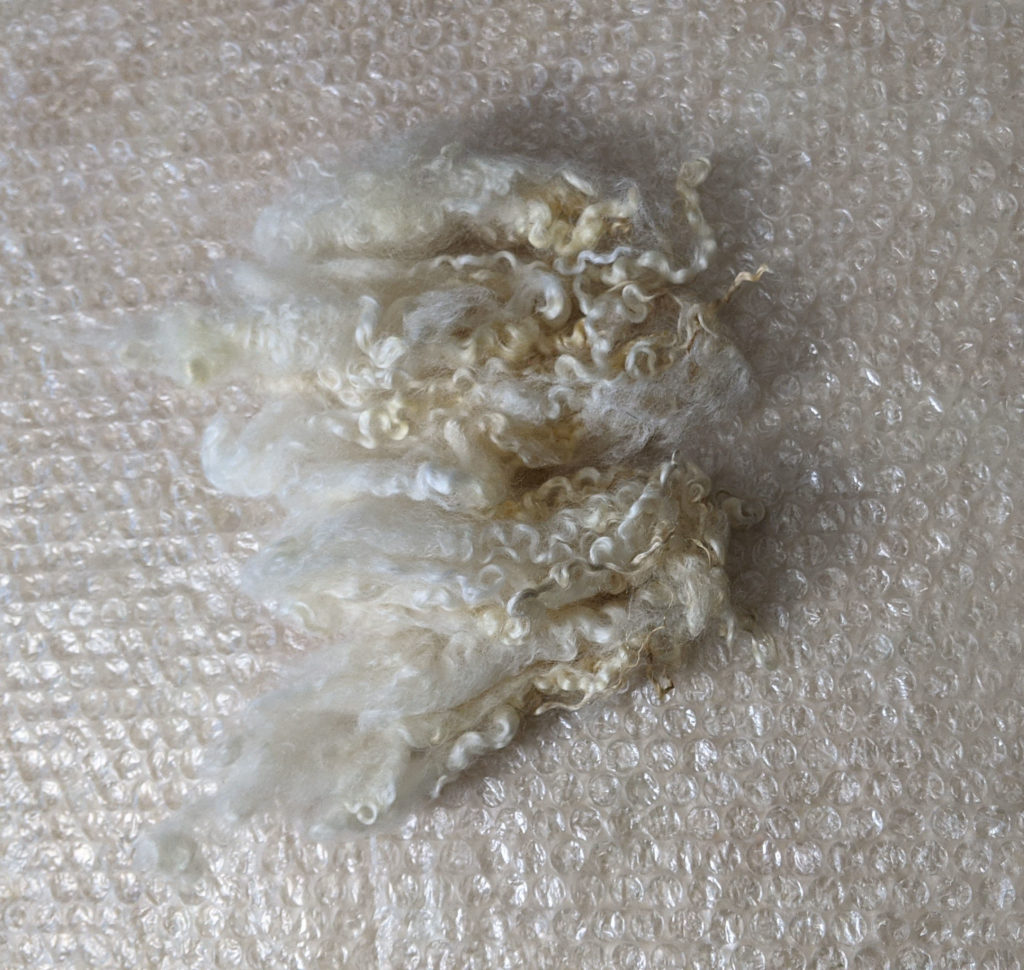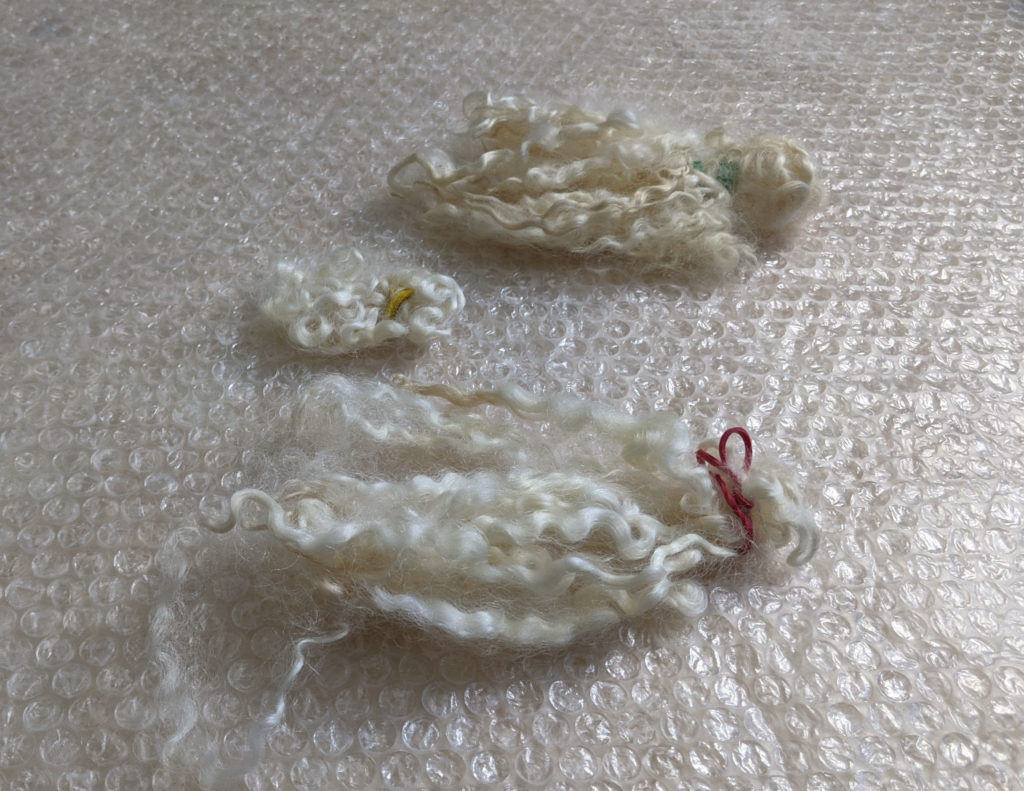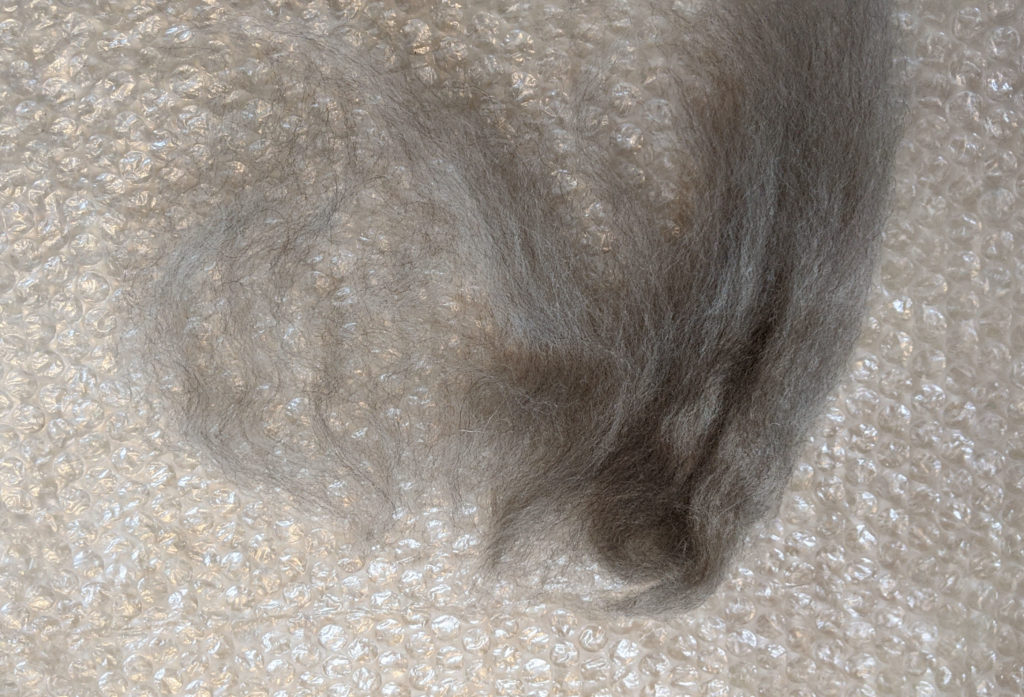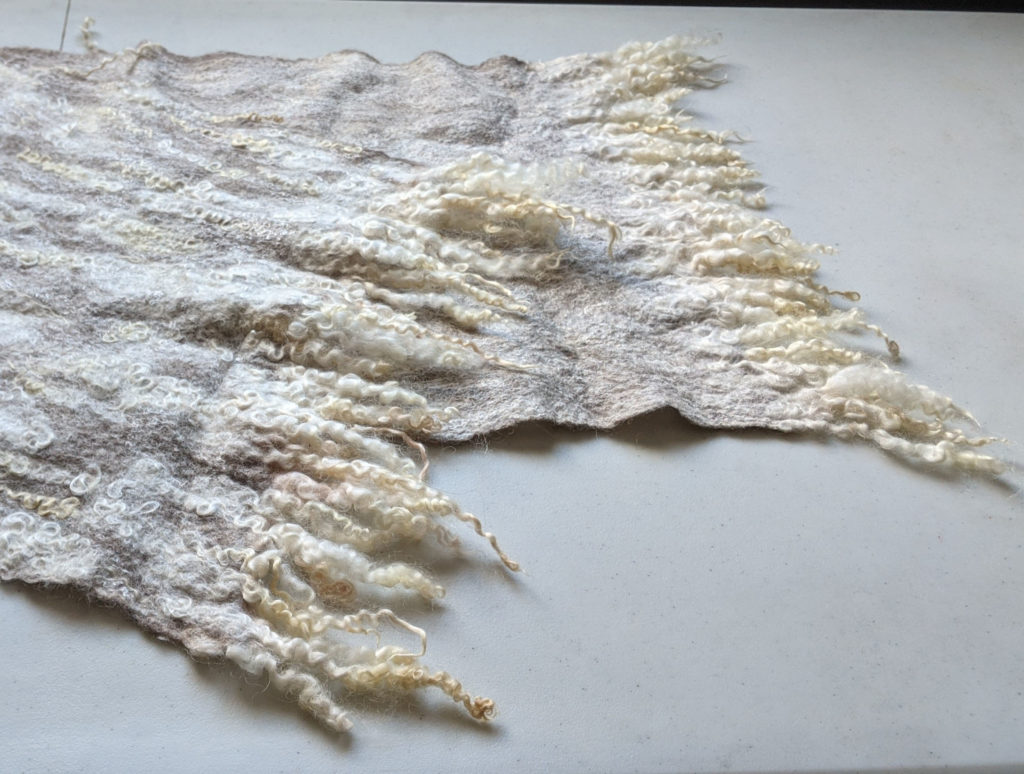
I saw amazing shawls and hats by Russian craftswoman Olga Shulyak on YouTube. She works a lot with sheep’s fleeces. I was familiar with fleece, but did not make things with it. Inspired by Olga’s work, I bought a natural top of Blue-faced Leicester wool fiber and Wensleydale locks. Bluefaced Leicester and Wensleydale are the breeds of sheep from which this wool was cut. The Bluefaced Leicester fiber is quite thick, but it is very fluffy and soft and its staples are long.

Bluefaced Leicester wool felts well and it is very pleasant to work with it. Wensleydale locks are the longest and most curly locks I know. Wensleydale locks keep their shape well in the product. They are very loved by feltmakers for these properties. By the way, I bought natural unwashed locks, they are much cheaper. I used unwashed locks in the scarf, they washed off in the process of felting.

Before I got started, I sorted the Wensleydale locks by quality and length. I got 3 piles: the first – long beautiful locks, in the second – shorter beautiful locks, in the third – short locks.

Then I covered the table with a bubble wrap and first I laid out the layer of white silk fiber.

Then I sprayed the silk with water from a spray bottle. The next layer was Bluefaced Leicester fiber. First I laid out two horizontal rows of wool fiber on long sides of the scarf to keep the edges stable.

The rest of the space of the scarf I filled with thin strands of wool without direction, I tore off a piece of wool from the top, spread it in my hands and laid it on the silk.


I covered the entire surface of the wool with a thin layer of the silk fiber. After that, I began to decorate the scarf with locks.

At both ends of the scarf I put long, beautiful curls as a fringe.

I added a lot of dishwashing liquid to the water and wetted the entire layout. I covered the layout with a net and rubbed it well with my hands. For better adhesion of the locks to the woolen base of the scarf, I used a sander. In some spaces, the locks did not adhere well to the scarf and I put a few hairs of wool on top of them and worked them again with a sander.
After work with the sander the scarf became stable. I removed the excess water with a towel and kneaded the scarf with my hands like dough. Then I rinsed out the scarf, straightened it on the table and lathered it with laundry soap. Then I had felted the scarf in the plane rubbing it by my hands. Then I put the scarf back in warm water, squeezed it out. Next I straightened the scarf on the table and lathered it with the soap again. I repeated the process several times because the locks were unwashed and the water after rinsing was very dirty. The soap foam quickly settled due to natural lanolin, which unwashed wool curls always contains in. In the process of felting, the curls were well washed and became white instead of dirty but the edges of locks remained yellow. I wrung out the finished rinsed scarf in a towel. While still wet, I ironed the scarf with a steam iron to shape it. In addition to the scarf, I also made a hat. I do not like felted hats, so I knitted a hat made of yarn of a suitable color and made felted inserts from Bluefaced Leicester wool with locks on it with a special needle. I also made a pom-pom with locks for the hat. A beautiful kit turned out.

In addition, I can say that felted things with locks look unusual and very beautiful. If you use unwashed curls, you must be ready for the fact that the unwashed wool has a very strong animal odor, especially if it is wet. Unwashed wool locks not only contain dirt, but also a manure. If you are not ready to tolerate this, buy washed curls.
